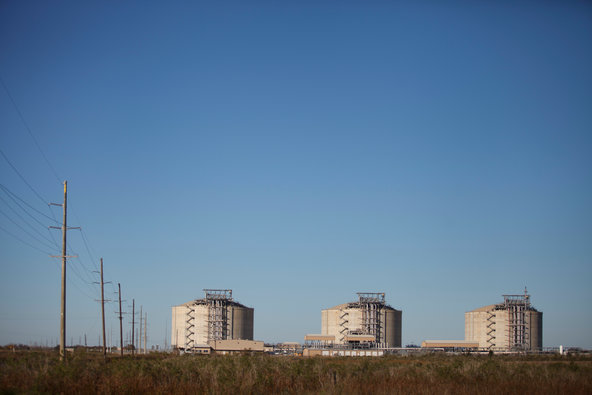They joined several other non-U.S. companies, including Korea Gas and GAIL, a large Indian utility, in trying to lock up prospective U.S. exports of abundant, low-cost shale gas.
Current low prices may not be the only attraction. Jean-Marie Dauger, the executive vice president of GDF Suez’s gas business, said in an interview that the company was trying to gain access to the U.S. natural gas pricing process: Unlike prices in much of the rest of the world, U.S. prices are set by market forces.
“The U.S. market will bring not only diversity in terms of physical sources, but economy,” he said. “We don’t know what the price will be, but we know it will be a market and price structure that is not the same as elsewhere in the world.”
Unlike oil, which is a globally traded commodity, natural gas is priced depending on location and the arrangement under which it is sold.
In North America, gas is a traded commodity whose price is usually linked to benchmarks set at the Henry Hub, a meeting point of pipelines in Louisiana. In the rest of the world, gas prices are often indexed to oil products that gas might replace — a system that was developed to sell gas from the giant Groningen field in the Netherlands, in the 1960s.
But the linkage to oil is eroding, especially in Europe, as competition increases and multiple sources of gas emerge, largely through the increased use of liquefied natural gas, which can be transported globally by specialized ships. A surge of gas exports from the United States — not a sure thing — would add to the pressures on the indexed system.
“There is a certain globalization in this market, which is improving the ability to use gas as a global commodity, ” Mr. Dauger said.
For now, there is not enough competition to eliminate regional disparities in gas prices. For instance, the U.S. price, influenced by abundant shale gas, is now about $4 per million British thermal units. In Britain, the most liquid of the European markets, the traded price is about $10 per million B.T.U.’s and in Asia about $15 per million B.T.U.’s.
But “the price differentials we see today are not going to persist,” said Kenneth B. Medlock III, an expert on gas at Rice University in Houston. While gas will never be priced exactly the same from place to place because of differing transportation costs, the spreads will narrow considerably, he said. With the international gas trade worth an estimated $250 billion or more, even a difference of a few cents can make a big difference.
GDF Suez, an operator of utilities in France and elsewhere, is a huge player in the global gas markets as a producer, consumer, supplier and trader. It uses about 110 billion cubic meters, or 3.9 trillion cubic feet, of gas per year to feed its own power plants and those of its customers, about as much as the consumption of Italy and France combined.
Part of Mr. Dauger’s job is to make sure that he has enough supply at the best prices. In recent years, that has been an almost impossible task because of the legacy of long-term contracts, typically of 15 to 30 years, between European buyers and suppliers like Gazprom of Russia, Statoil of Norway and Sonatrach of Algeria.
These contracts made sense when they were essentially deals between monopoly producers and distributors like GDF Suez. But they don’t look so good now that customers can shop around.
“This business used to be one of the most boring businesses in the world; now it has become one of the most hectic,” said Paolo Scaroni, the chief executive of the Italian energy company Eni.
A two-tier pricing system has now emerged: About half the gas consumed in Europe comes at market or hub prices. The remainder, covered by long-term contracts, is still linked to oil.

Article source: http://www.nytimes.com/2013/06/19/business/energy-environment/gas-prices-moving-away-from-link-to-oil.html?partner=rss&emc=rss
